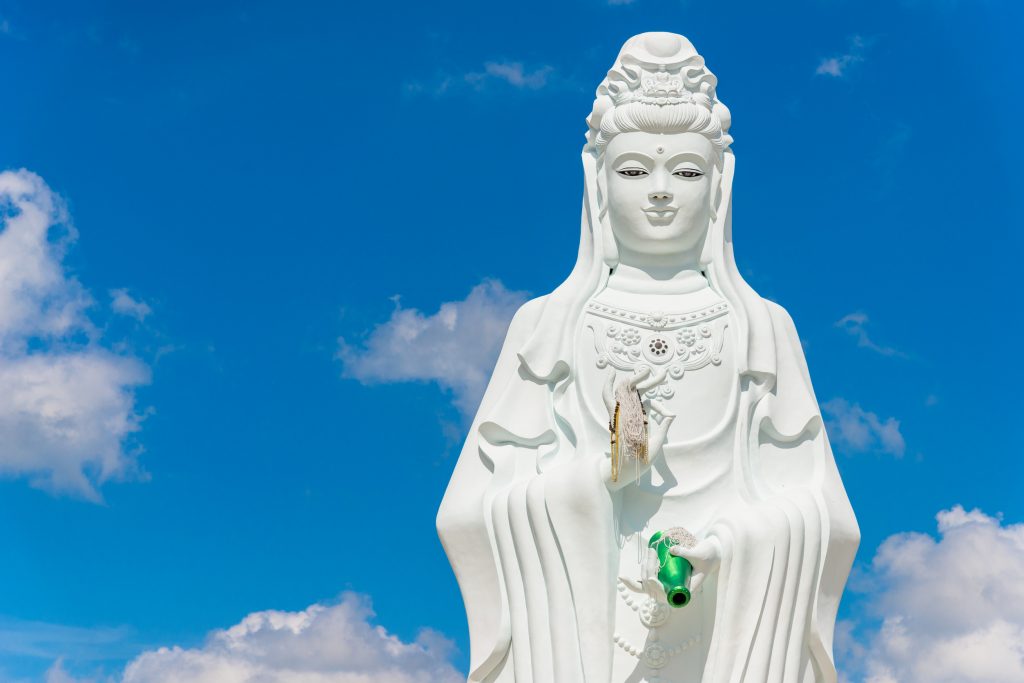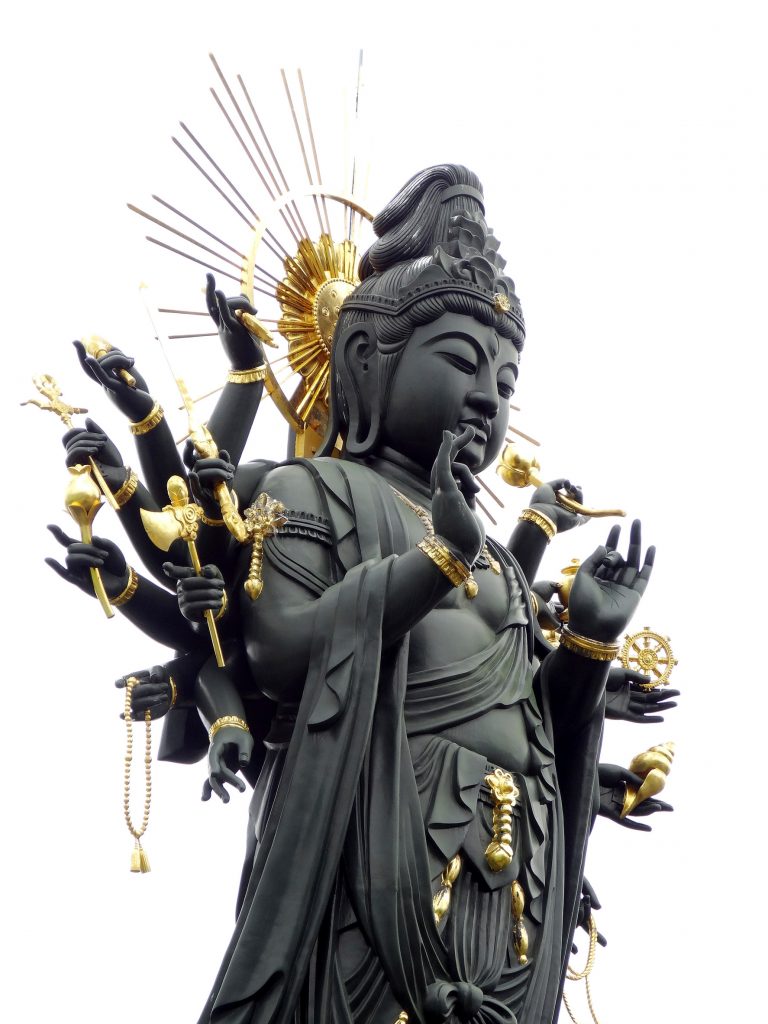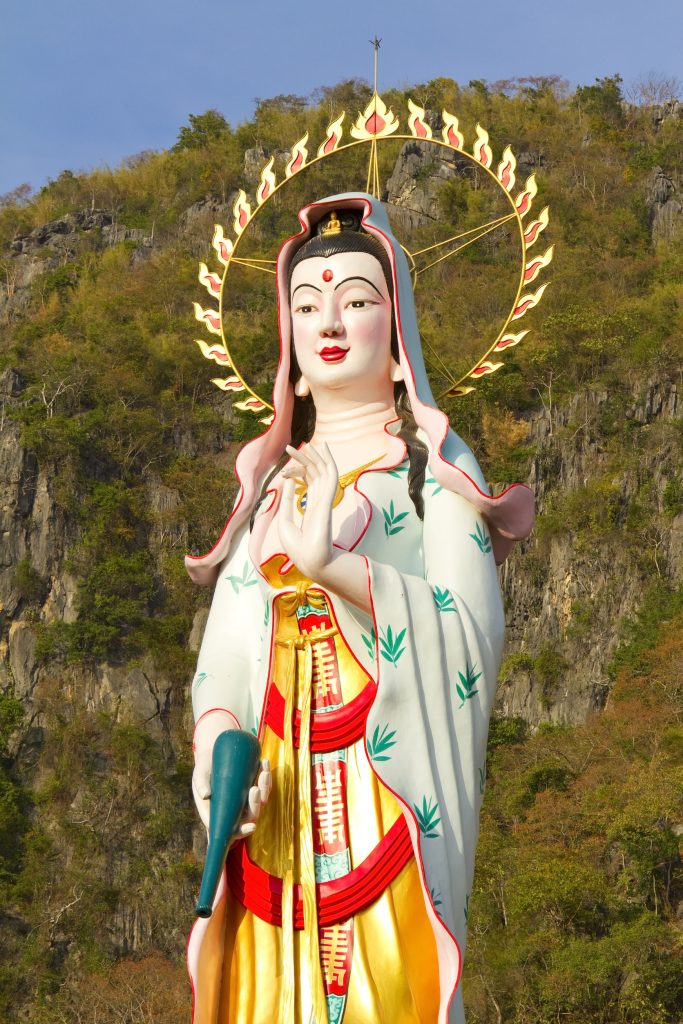
Among the most beloved figures in East Asian spirituality is Kuan Yin, Goddess of Mercy. Revered across China and much of the Buddhist world, she is a symbol of unconditional compassion, self-sacrifice, and maternal love. While her name may appear in various forms—Guanyin, Quan Yin, Kwan Yin, Tie Guan Yin, Ti Kuan Yin—all refer to the same merciful figure, the Iron Goddess of Mercy, whose influence transcends borders, religions, and time.
Origins: From Avalokiteshvara to Kuan Yin
Kuan Yin’s origins trace back to the Indian bodhisattva Avalokiteshvara, known as the “Lord Who Looks Down with Compassion.” In early Buddhist texts, Avalokiteshvara is male. However, by the 12th century, Chinese depictions had evolved to reflect the divine as female—graceful, nurturing, and merciful—more resonant with the spiritual aspirations of Chinese devotees. Over time, Kuan Yin became a distinctly feminine and distinctly Chinese embodiment of compassion.
In Sanskrit, one of her names is Padmapāṇi, meaning “Born of the Lotus,” symbolizing purity and rebirth. Her Chinese name, Guanyin (觀音), translates to “She Who Hears the Cries of the World,” emphasizing her role as an ever-listening guardian of those in need.
Legends of Compassion and Self-Sacrifice

The mythology surrounding Kuan Yin is rich with stories that illustrate her infinite mercy:
The Gate of Nirvana
According to one tale, Kuan Yin had earned the right to enter Nirvana after a life of virtue. But just as she approached the threshold of enlightenment, she heard cries of suffering from the world below. She turned back, choosing instead to remain and help humanity.
Miao Shan
Another origin story identifies her as Miao Shan, the daughter of a Chinese king who resisted her father’s demand to marry. Desiring instead to live a life of spiritual devotion, she endured cruelty and exile. In one version, she sacrificed her own eyes or arms to heal her father, acts of love that led to her deification.
Protector of All Beings
Other stories tell of her rescuing a fish (a dragon prince in disguise), calming storms for sailors, and offering solace to souls in the afterlife.
These legends solidified her status not only as a bodhisattva of mercy but also as a protector of women, children, travelers, and the suffering.
Iconography and Symbolism
A vast array of forms portrays Kuan Yin—more than any other deity in the Chinese pantheon. Artists depict her with a thousand arms and eyes to represent her ability to see and assist all beings. They show her holding a child, standing on a lotus, or riding a mythological lion-like creature called a Hou.
Common features across her depictions include:
- White flowing robes: Symbolizing purity
- Bare feet: Indicating humility and approachability
- A vase of pure water or holy dew: Representing healing
- Seated or standing on a lotus: Signifying enlightenment
- Flanked by two attendants: Golden Youth and Jade Maiden
Artists sometimes depict her with multiple heads and hands, emphasizing her divine power to perceive and relieve universal suffering from all directions.
Worship and Devotion

The Kuan Yin Goddess of Mercy holds a central place in Chinese folk religion, Mahayana Buddhism, and even Taoist practices. Her appeal is especially strong among women, who often pray to her for fertility, safe childbirth, and protection of children.
Devotees celebrate her on three sacred days: the 19th day of the 2nd, 6th, and 9th lunar months. Her temples, large and small, span all regions of China and much of East and Southeast Asia.
Mount Putuo (Putuoshan), an island off the coast of Zhejiang Province, attracts countless pilgrims as one of the most famous pilgrimage destinations. Believers honor the site where Kuan Yin is said to have lived for nine years, reigning as the “Queen of the Southern Seas.” Near Beijing, pilgrims gather at Mount Miaofeng, hosting colorful rituals—complete with fireworks and drum processions—to draw her attention.
Influence in Art and Popular Culture
Artists have replicated Kuan Yin’s image in thousands of forms, from jade carvings and porcelain figurines to modern devotional paintings. She stands as the most widely depicted female figure in Chinese religious art.
In Dehua, Fujian Province, artisans have for centuries crafted her likeness in fine white porcelain known as blanc de Chine. During the Qing Dynasty, these sculptures were even exported to Europe, where they were mistaken for depictions of the Virgin Mary.
Whether in home altars or temple halls, her presence brings a sense of peace, comfort, and maternal strength.
Tea Inspired by the Goddess: Tie Guan Yin
One of the most famous teas in China, Tie Guan Yin—translated as Iron Goddess of Mercy—honors Kuan Yin. This prized oolong tea originated in Fujian province, where tea lovers praise its floral aroma and rich, silky texture. According to legend, the goddess herself revealed the tea to a humble farmer in a dream as a divine reward for his devotion. Today, tea enthusiasts not only enjoy Tie Guan Yin for its exquisite flavor but also use it as a spiritual offering—a quiet tribute to compassion and mindfulness in every cup.
A Living Legacy of Mercy
Today, the Kuan Yin Goddess of Mercy continues to inspire millions around the world. Her teachings and image remind us of the power of empathy, the importance of service, and the sacred beauty of compassion.
In times of uncertainty or personal hardship, many turn to her not just as a spiritual symbol but as an enduring presence—one who listens, comforts, and heals.
